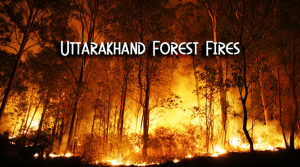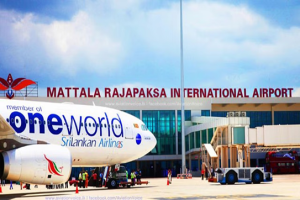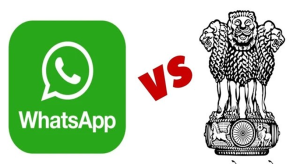“Janaushadhi Sugam” Mobile App to access Janaushadhi kendras
- Amid nationwide lockdown due to COVID-19 crisis Janaushadhi Sugam Mobile App is helping people in a big way to locate their nearest Pradhan Mantri Bharatiya Janaushadhi Kendra (PMJAK) and availability of affordable generic medicine with its price.
- Over 325000 people are using Janaushadhi Sugam Mobile App to avail the host of benefits provided by it. In order to make use of digital technology for easing the life of consumers, this mobile application for Pradhan Mantri Bhartiya Janaushadhi Pariyojana (PMBJP) has been developed by Bureau of Pharma PSUs of India (BPPI) under Department of Pharmaceuticals , Ministry of Chemicals and Fertilizers, Government of India, for facilitating the general public by providing a digital platform at the tip of their fingers, by the virtue of which they can avail a host of user-friendly options like locate nearby Janaushadhi Kendra, direction guided through Google Map for location of the Janaushadhi Kendra, search Janaushadhi generic medicines, analyze product comparison of Generic and Branded medicine in form of MRP & overall Savings, etc.
- Janaushadhi Sugam Mobile App is available on both Android & I-phone platforms. It can be downloaded free of cost by the user from Google Play Store and Apple Store.
Nano-medicine to alter oxidative stress for better immune power
- Scientists at S. N. Bose National Centre for Basic Sciences, Kolkata (SNBNCBS) have developed a safe and cost-effective Nano medicine that promises treatment of a number of diseases by altering oxidative stress in the body. The research may provide a ray of hope in India’s fight against COVID-19, as the Nano medicine can decrease or increase reactive oxygen species (ROS) in our body, depending on the situation and cure the disease.
- The ability of this research for controlled enhancement of ROS in mammals raises hopes of a new potential for the application of Nano medicine in controlling virus infections, including COVID-19. Animal trial for the Reduction & Oxidation processes (Redox) healing of several diseases is completed, and now the institute is looking for sponsors to start clinical trials on humans.
- The medicine combines nanoparticles extracted from manganese salt with citrus extract, like from lemon. A crucial combination of manganese and citrate employing tricks of nanotechnology produces the Nano medicine. The artificially made Nano medicine was found to be important to maintain a balance of reduction and oxidation processes (Redox) in our body’s tissues. Redox reactions in cells add or remove oxygen, and are essential for many processes such as generating energy in cells. The redox reactions can also create products harmful to cells called reactive oxygen species (ROS), which can instantly oxidize lipids (fat), proteins, and nucleic acids, accelerating the ageing process. However, it has to be noted that our immune cells naturally produce ROS or generate oxidative stress to kill viruses or bacteria and infected cells in our body. Thus, controlled-increase of ROS or oxidative stress aids our immune cells to perform their natural functions more efficiently.
WIHG reveals 35 thousand-year history of river erosion in Ladakh Himalayas
- Scientists and students from Wadia Institute of Himalayan Geology (WIHG), an autonomous institute under the Department of Science &Technology, Govt. of India studied rivers in Ladakh Himalaya, bringing out 35 thousand-year history of river erosion and identified hotspots of erosion and wide valleys that act a buffer zones. The study showed how rivers in drier Ladakh Himalaya operated in longer time scales and how they responded to varying climate, an understanding of water and sediment routing, which is crucial as the country gears up its infrastructure and develops smart cities.
- The scientists have traced where the rivers draining Himalaya and its foreland erode the most and identify the zones that receive these eroded sediments and fill up. The Ladakh Himalaya forms a high altitude desert between Greater Himalayan ranges and Karakoram Ranges. The Indus and its tributaries are major rivers flowing through the terrain. The Zanskar River is one of the largest tributaries of the upper Indus catchment, draining orthogonally through highly deformed Zanskar ranges. Two prominent tributaries of Zanskar River are the Doda and TsrapLingti Chu, which confluence at Padam village in the upper valley to form the Zanskar River.
- In the study published in the journal Global and Planetary Changes Zanskar catchment was explored by WIHG team to understand the landform evolution in transitional climatic zone, using morphed stratigraphy and provenance study of landforms like valley fill terraces, alluvial fans (triangle-shaped deposit of gravel, sand, and even smaller pieces of sediment, such as silt).
- Their research suggested that the wide valley of Padam, with an area of 48 square km, in the upper Zanskar, has stored a vast amount of sediments in these landforms. Where, presently, 0.96±0.10 km3 of sediment is stored in its terraces and fans, and since the last 32 thousand years, 2.29±0.11 km3 of sediment has been eroded by the river from Padam, giving it a specific sediment yield of 2.2×103 tons/km2 per year.
- The sediment contribution from such transient basins is significant when compared with the 4–7 km3 of sediment reportedly eroded from the entire Indus system in Ladakh since the Last Glacial Maximum (LGM) and the 7–22 km3 from the Zanskar since last 10 thousand years. Thus Padam valley is a hotspot of sediment buffering in the Zanskar.
- A study of the sediments suggested that most sediments were derived from Higher Himalayan crystalline that lie in the headwater region of Zanskar. It was found out that dominant factors responsible for sediment erosion were deglaciation and Indian Summer Monsoon derived precipitation in the headwaters despite the presence of a geomorphic barrier (the deep, narrow gorge) between the upper and lower catchments of the river, and it remained connected throughout its aggradation history.
- The study by the WIHG team will help to understand river-borne erosion and sedimentation, which are the main drivers that make large riverine plains, terraces, and deltas that eventually become the cradle to evolving civilizations.
Nitin Gadkari, launches Bank of Schemes, Ideas, and Innovation & Research Portal on MSMEs
- Union Minister of Road transport & Highways and MSME Shri Nitin Gadkari today launched Bank of Schemes, Ideas, Innovation and Research portal on MSMEs through Video Conference from Nagpur in the presence of Shri Pratap Chandra Sarangi, MoS for MSME along with Secretary MSME Dr. Arun Kumar Panda and DC, MSME Shri Ram Mohan Mishra and others senior officers. The Portal gives access to all Schemes of Union, State and UT Governments. It has the provision for uploading Ideas, Innovations & Researches in the sector. The portal has unique features of not only crowd sourcing of Ideas, but also evaluation and rating the ideas by crowd sourcing. It can also facilitate inflow of venture capital, foreign collaboration etc.
- Speaking about the importance of the portal, Shri Gadkari said that this portal will prove to be of great transformational significance to the MSMEs in particular and the economy in general. This is a very good beginning, Shri Gadkari added. He also suggested that category-wise classification and analysis of information and the achievements which may be published so that others learn/take lessons from successful experiences. Shri Gadkari advised that the portal should be handled by quality professionals to keep it updated on sustained basis. He stressed upon the need for conversion of knowledge into wealth. Shri Gadkari also said that there is a need for greater work on Research, Technology, and Innovation which can bring down cost and improve quality.
PM holds a comprehensive meeting to discuss strategies on boosting investment in India
- PM Shri Narendra Modi today held a comprehensive meeting to discuss strategies to attract more foreign investments into India as well as to promote local investments in order to give a boost to the economy against the backdrop of the COVID-19 Pandemic.
- It was discussed that a scheme should be developed to promote more plug and play infrastructure in the existing industrial lands/plots/estates in the country and provide necessary financing support. During the meeting, the PM directed that the action should be taken for a more proactive approach to handhold the investors, to look into their problems and help them in getting all the necessary Central and State clearances in a time bound manner.
- Various strategies to bring investments into India in a fast-track mode and to promote Indian domestic sectors were discussed. Detailed discussions were held on guiding states to evolve their strategies & be more proactive in attracting investments.
M.o.C. launched a Project Monitoring Unit (PMU) for early operationalization of coal mines
- Ministry of Coal (M.o.C) launched a Project Monitoring Unit (PMU) for facilitation of early operationalisation of coal mines allocated by the Central Government.
- This is an important step forward to promote Ease of Doing Business as it will hand-hold and support Coal mines allocates in obtaining timely approval/permissions to operationalize the mines. Shri Anil Kumar Jain, Secretary, M.o.C addressed the allocatees on the occasion through a video conference and asked them to freely utilize the services of the Consultant in sorting out their issues so that the coal production may begin at the earliest.
- PMU has been launched for helping the allocatees of coal mines in obtaining various clearances required from the Central/State government authorities for operationalization of coal mines. This will lead to ramping up of coal production in the country.
- This move is also expected to go a long way in attracting bidders for the ensuing auction round of commercial blocks. This measure will improve production and business environment in the coal industry.
- M/s KPMG, has been appointed as the Consultant, in Project Monitoring Unit (PMU) through a transparent bidding process.
SERB approves funding for study of mathematical & simulation aspects of COVID 19
- Science and Engineering Research Board (SERB), a statutory body under the Department of Science and Technology (DST), Government of India, has approved funding for 11 projects under MATRICS scheme for studying Mathematical modelling and computational aspects to tackle the COVID 19 pandemic.
- Most of these studies attempt to propose mathematical/ simulation models to account for various factors relevant to COVID 19 by modifying the basic SIR (Susceptible-Infected-Recovered) models. Some of such factors are heterogeneity of population, the role of asymptomatic population, migration and quarantine, effect of social distancing and lockdown, socioeconomic factors and so on. These studies will be primarily aimed to study Indian conditions and will provide an estimate of Basic Reproduction Number– the qualitative indicator of the degree of contagiousness of the disease. – These will be helpful to forecast future pandemic by using the data available and provide fundamental insights into kinetics and management of infectious diseases.
- The proposed studies also aim to identify the maximum likelihood infection tree when infection reports and contact network structure are known to substantially reduce the efforts of the administration by targeting a subset of manageable size. They will address the spread of pandemic and the impact of preventive issues through a parametric prediction process with an outcome consisting of a packaged solution in the form of usable software which may be made available for ready use by the Government of India and identify possible cure of COVID 19 through the study of DNA structures by creating patterns of DNA of different viruses.
- These studies of disease transmission dynamic models supported under the MATRICS Special call on Covid 19 will help to estimate parameter sets and provide control mechanisms of the spread of COVID-19 and also help the frontline health professionals and policymakers to define effective measures.
DST launches programme on health & risk communication with focus on COVID-19
- National Council for Science & Technology Communication (NCSTC), Department of Science & Technology (DST) has launched a programme on health and risk communication ‘Year of Awareness on Science & Health (YASH)’ with focus on COVID-19.
- It is a comprehensive and effective science and health communication effort for promoting grass-root level appreciation and response on health and would help saving and shaping the lives of people at large, as well as build confidence, inculcate scientific temper and promote health consciousness among them.
- The current pandemic scenario has posed concerns and challenges all around, where scientific awareness and health preparedness play a significant role to help combat the situation. This requires translation and usage of authentic scientific information to convey the risks involved and facilitates communities to overcome the situation. The programme will encompass development of science, health, and risk communication software, publications, audio-visual, digital platforms, folk performances, trained communicators, especially in regional languages to cater to various cross-sections of the society in the country.
Microwave sterilizer to disintegrate novel Coronavirus developed
- Defence Institute of Advanced Technology, Pune, a deemed university supported by Defence Research and Development Organisation has developed a microwave steriliser named as ‘ATULYA’ to disintegrate (COVID-19). The virus gets disintegrated by differential heating in the range of 560 to 600 Celsius temperatures.
- The product is cost effective solution, which can be operated in portable or fixed installations. This system was tested for human/operator safety and has been found to be safe. Depending upon size and shape of various objects, time of sterilisation is from 30 seconds to one minute. Approximate weight of the system is three kilogrammes and it can be used for non-metallic objects only.
IIT Kanpur to develop affordable masks

Govt. facilitates the Inter-state Movement of Stranded People

COVID19 current update in India

QUIZ TIME
- Name of the app to access PMJAK?
- Janaushadhi Sugam
- PMJAK app
- Aushadhi Daan
- None
Answer: A
- Which of the following is related to facilitation of early operationalisation of coal mines?
- Project Managing unit
- Project Monitoring Unit
- Project Manufacturing Unit
- None
Answer: B
- What is the name of Microwave sterilizer developed recently by DIAT, Pune?
- ATULYA
- AROGYA
- RUHDAAR
- None
Answer: A
- Basic Reproduction Number of any disease can be defined as?
- Degree of Reproduction
- Degree of Fertility
- Degree of Contagiousness
- None
Answer: C
















